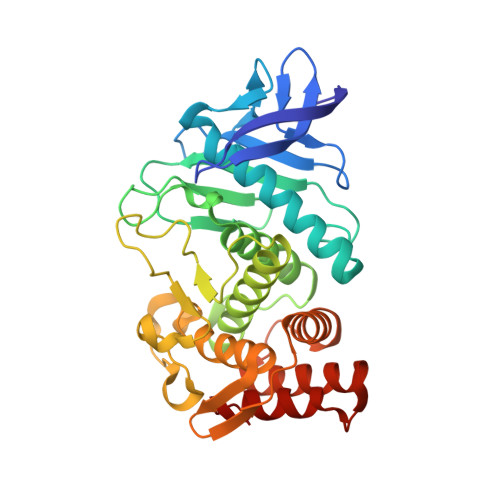Polyacrylamide injection matrix for serial femtosecond crystallography.
Park, J., Park, S., Kim, J., Park, G., Cho, Y., Nam, K.H.(2019) Sci Rep 9: 2525-2525
- PubMed: 30792457
- DOI: https://doi.org/10.1038/s41598-019-39020-9
- Primary Citation of Related Structures:
6IG6, 6IG7 - PubMed Abstract:
Serial femtosecond crystallography (SFX) provides opportunities to observe the dynamics of macromolecules without causing radiation damage at room temperature. Although SFX provides a biologically more reliable crystal structure than provided by the existing synchrotron sources, there are limitations due to the consumption of many crystal samples. A viscous medium as a carrier matrix reduces the flow rate of the crystal sample from the injector, thereby dramatically reducing sample consumption. However, the currently available media cannot be applied to specific crystal samples owing to reactions between the viscous medium and crystal sample. The discovery and characterisation of a new delivery medium for SFX can further expand its use. Herein, we report the preparation of a polyacrylamide (PAM) injection matrix to determine the crystal structure with an X-ray free-electron laser. We obtained 11,936 and 22,213 indexed images using 0.5?mg lysozyme and 1.0?mg thermolysin, respectively. We determined the crystal structures of lysozyme and thermolysin delivered in PAM at 1.7?? and 1.8?? resolutions. The maximum background scattering from PAM was lower than monoolein, a commonly used viscous medium. Our results show that PAM can be used as a sample delivery media in SFX studies.
Organizational Affiliation:
Pohang Accelerator Laboratory, Pohang, Gyeongbuk, Republic of Korea. jaehyun.park@postech.ac.kr.




















